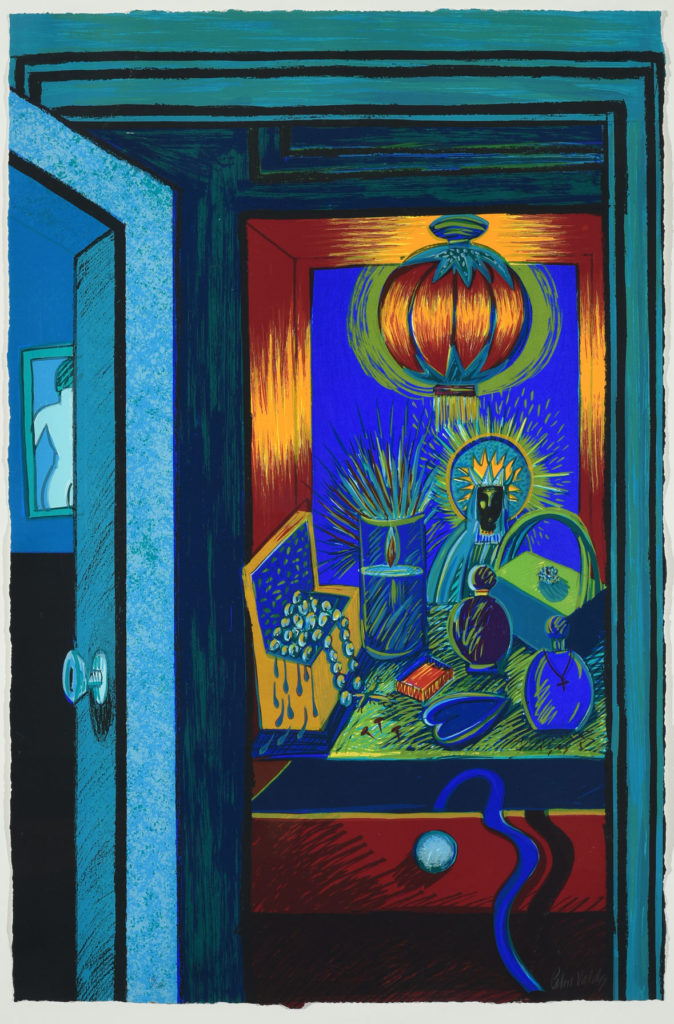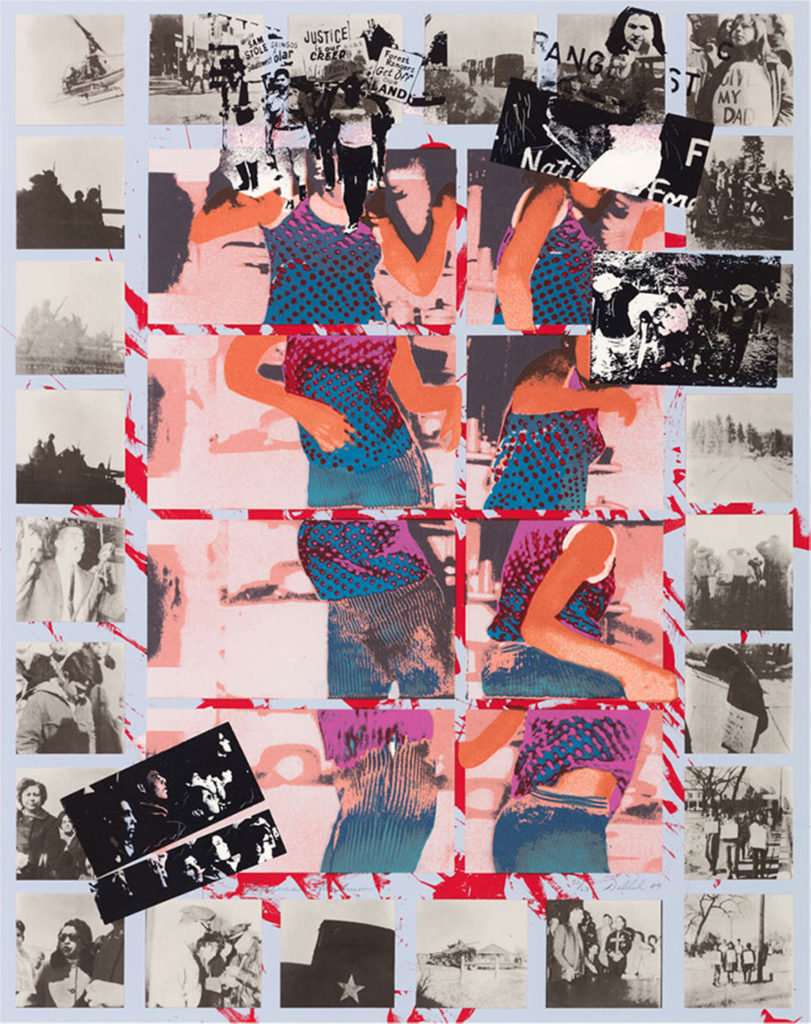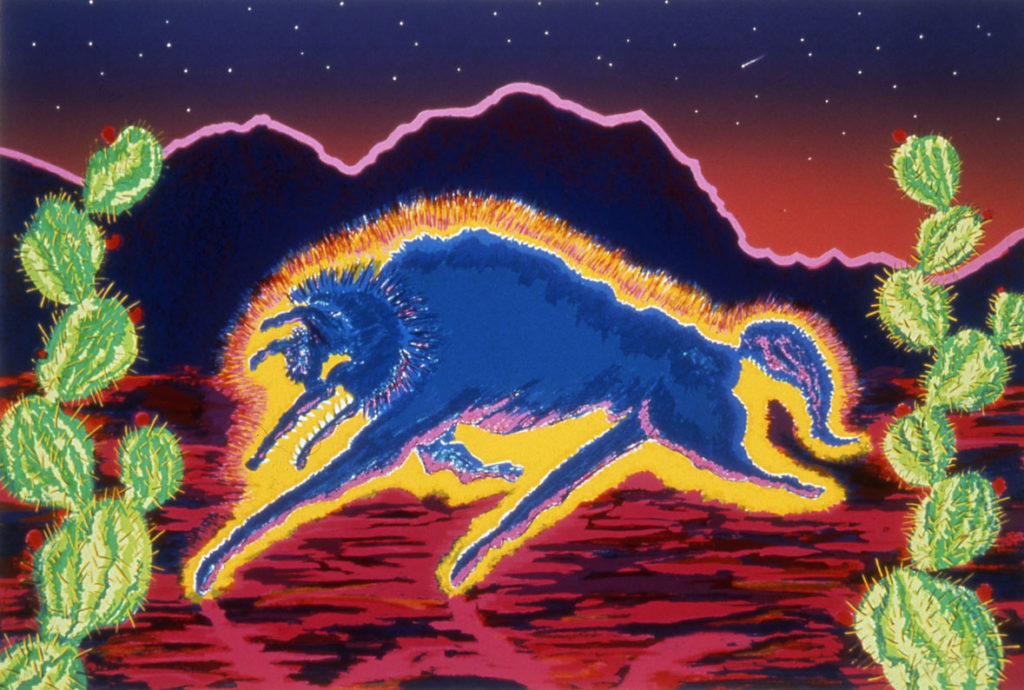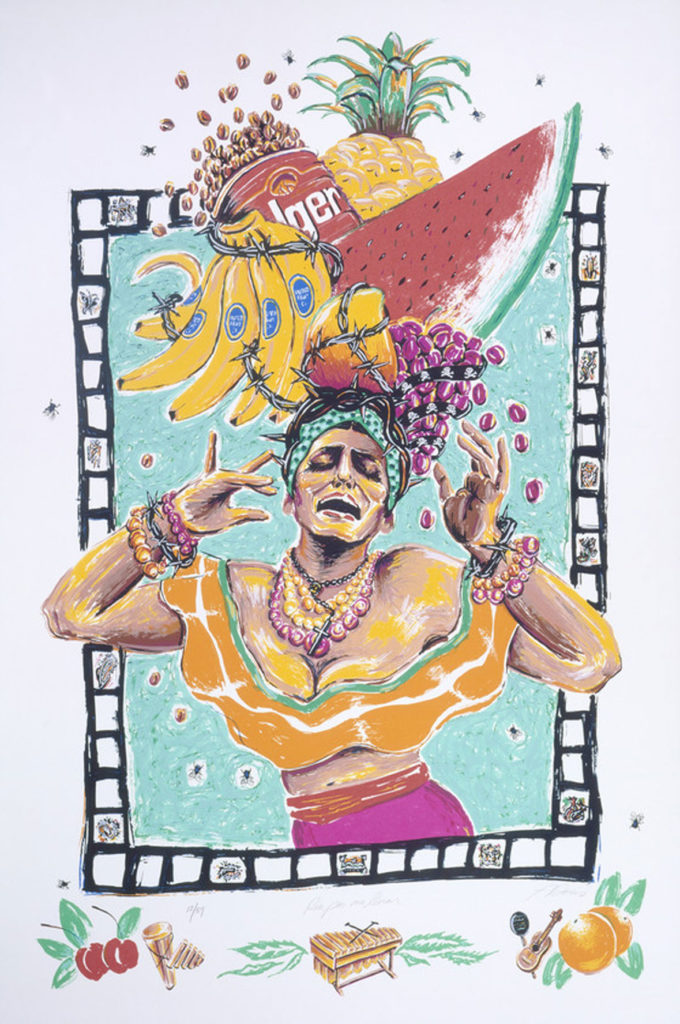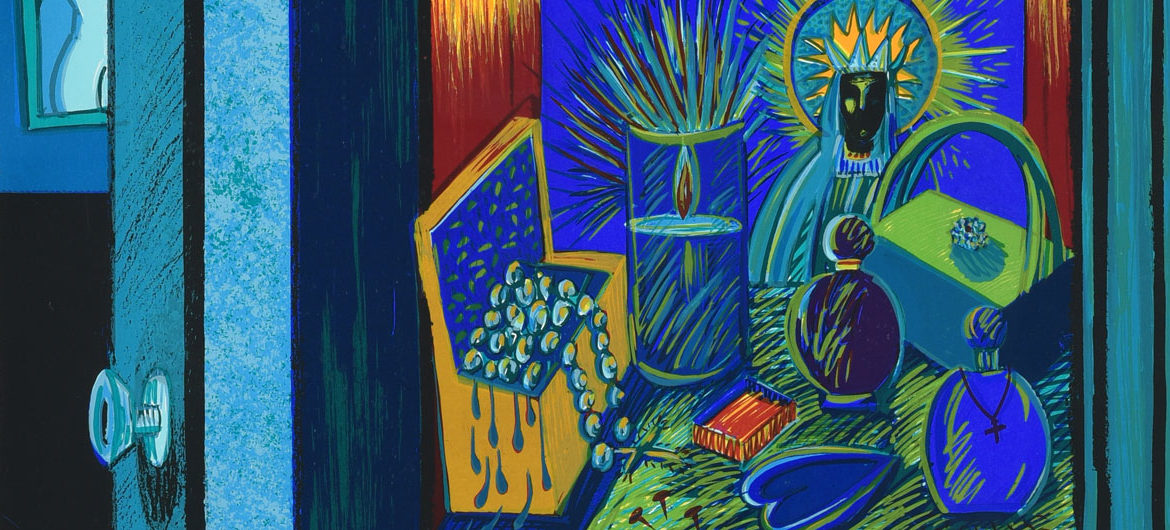In the early 1970s, two young queer Mexican artists, painter Carlos Bueno and photographer Antonio Ibañez, and Franciscan nun and Temple University-trained artist Sister Karen Boccalero joined forces to address the lack of facilities available to young Chicano artists in Los Angeles.
They made prints out of an East LA garage, behind the home where Boccalero lived with other nuns, and there launched Self Help Graphics & Art, which continues to this day. The community art center provided classes, studios, exhibitions (nurturing Gronk, Frank Romero, Patssi Valdez and numerous others), Day of the Dead celebrations, and, beginning in 1982, the Screenprint Atelier program.
The printmaking program is the focus of “Self-Help Graphics, 1983-1991” at the Laguna Art Museum in Laguna Beach, California, from Jan. 17 to May 27, 2019. The 16 screenprints in the exhibition are drawn from the museum’s collection of Self Help screen prints purchased in 1992.

Boccalero had studied with Sister Corita Kent at Immaculate Heart College in Los Feliz in the 1960s and was inspired by the social and political commentary in Kent’s screenprints. As director of the center, “she put the arts scene in East Los Angeles on the map,” Bolton Colburn, then director of the Laguna Art Museum, told The Los Angeles Times when she died at age 64 in 1997. “She helped to cultivate Chicano art.”
Carlos Bueno spent the 1970s in Los Angeles before returning to his native Mexico. “He bridged that whole idea, the connection between Mexico and Chicanos here,” said Kathy Gallegos, then owner of LA’s Avenue 50 Studio told The Los Angeles Times when he died in 2001 at age 60. “What he did was influence artists to look back to their roots in Mexico to find inspiration. That is the root of the Chicano movement.”
Many of Southern California’s leading Latino artists would work with Self-Help. Styles included vivid expressionism and pre-Columbian and pop iconography. They addressed Latino life, the Chicano movement for Mexican-American civil rights, the United Farm Workers of America, the Watts rebellion, the AIDS epidemic, racism.
Self Help, exhibition organizers write, “provided Chicano and Latino artists of the Los Angeles region with studio facilities, materials, and the technical guidance of a master printer. The result was an extraordinary and exuberant flowering of the silkscreen print.”
If this is the kind of coverage of arts, cultures and activisms you appreciate, please support Wonderland by contributing to Wonderland on Patreon. And sign up for our free, weekly newsletter so that you don’t miss any of our reporting.

Alfredo de Batuc, “Seven Views of City Hall,” 10-color serigraph, 1987. (Laguna Art Museum)
